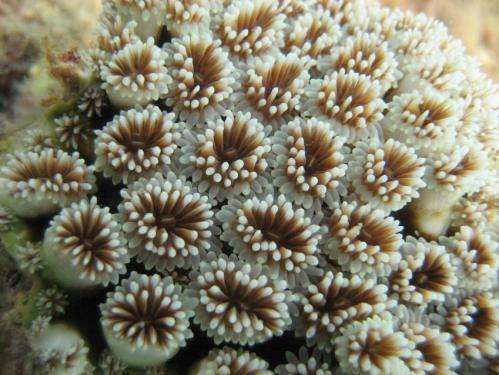'Perfect storm' led to 2016 Great Barrier Reef bleaching

Researchers from James Cook University and the Université catholique de Louvain, Louvain-la-Neuve, Belgium say unprecedented oceanographic conditions in 2016 produced the perfect storm of factors that lead to a mass coral bleaching.
JCU's Professor Eric Wolanski said even in very warm years with a summer el Nino event, such as 1998, there was no massive coral bleaching in the Torres Strait and only small to moderate bleaching in the northern Great Barrier Reef.
"So, the extensive coral bleaching in these areas during the summer of 2016 was an unwelcome surprise," he said.
A 2016 aerial survey of the northern Great Barrier Reef lead by Professor Terry Hughes from JCU's Center of Excellence for Coral Reef Studies showed that 90 per cent of reefs in some of these areas were severely bleached.
Professor Wolanski said satellite data showed the 2016 El Nino heating started in the Gulf of Carpentaria, with patches of water reaching an exceptionally high 34 oC.
The water then flowed east onto the Torres Strait reefs and south to the Great Barrier Reef. The 'residence time' of the very warm water in the Torres Strait and the Northern Great Barrier Reef was exceptionally long, which increased the thermal stress on the coral.
All of these factors enabled local solar heating to proceed unrestricted.
"Examining surface currents suggests that the North Queensland Coastal Current in the Coral Sea, which would normally flush and cool the Northern Great Barrier Reef, actually did the opposite. It reversed course and brought very warm water to the Northern Great Barrier Reef."
Professor Wolanski said these processes together made it the perfect thermal storm.
He said the study employed oceanography models used extensively to study water flow in the region, which were then calibrated with real oceanographic data.
Professor Wolanski said the study was subjective to the extent that there was a lack of oceanographic field data in the Great Barrier Reef itself for the 2016 el Nino event. By contrast, the amount of oceanographic field data in the Torres Strait and the northern Coral Sea was very good.
"What we presented is our best-informed attempt to reveal the mechanisms involved in causing the event, based on the available oceanographic data combined with the existing body of knowledge on the water circulation in and around the Torres Strait/Northern Great Barrier Reef region."
More information: E. Wolanski et al, The Gulf of Carpentaria heated Torres Strait and the Northern Great Barrier Reef during the 2016 mass coral bleaching event, Estuarine, Coastal and Shelf Science (2017). DOI: 10.1016/j.ecss.2017.06.018
Provided by James Cook University





















